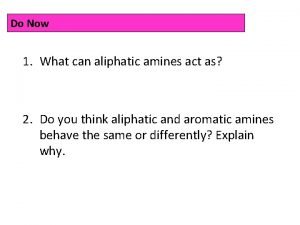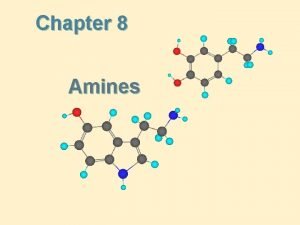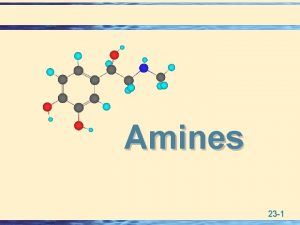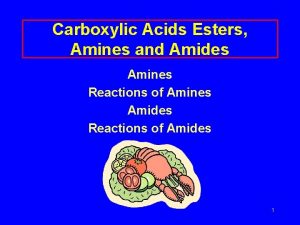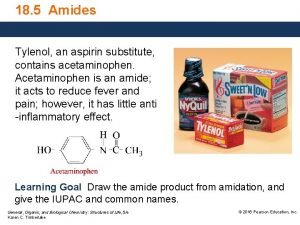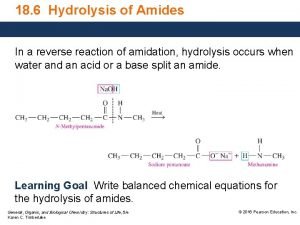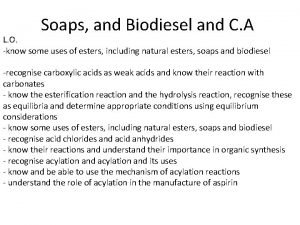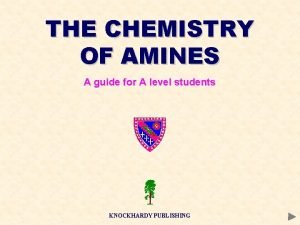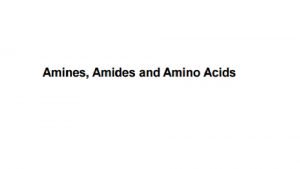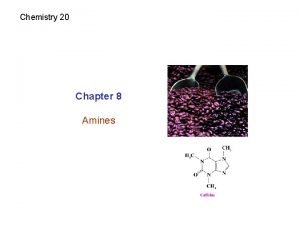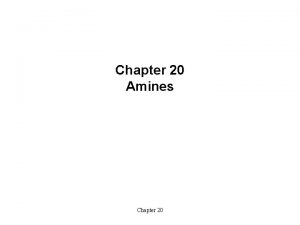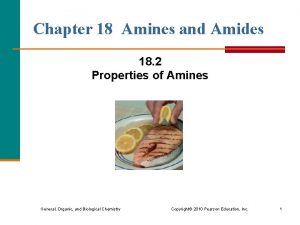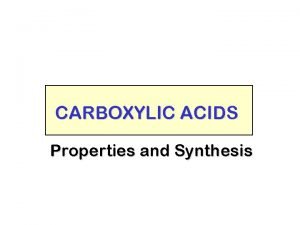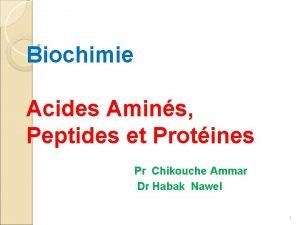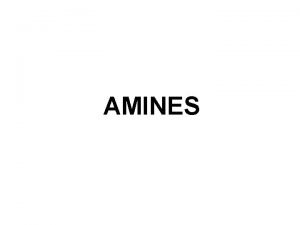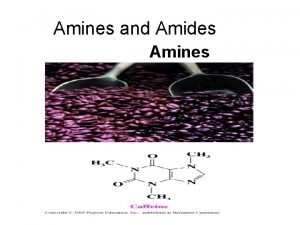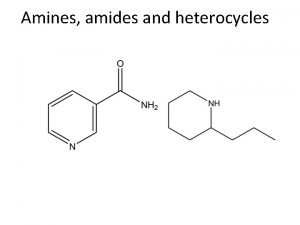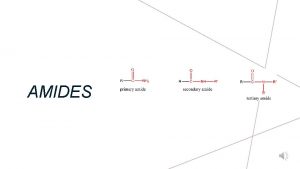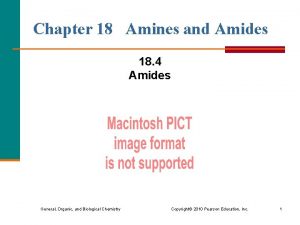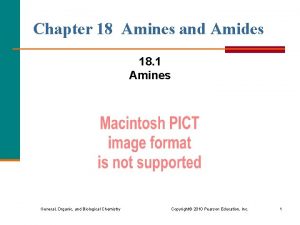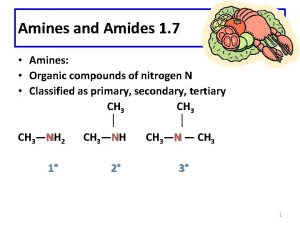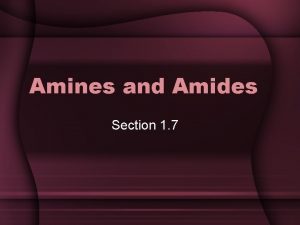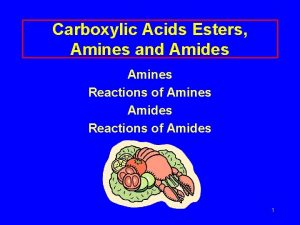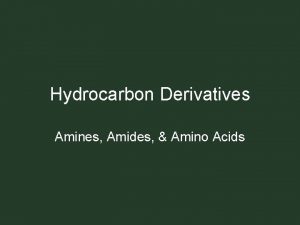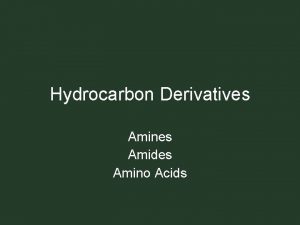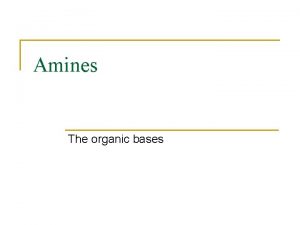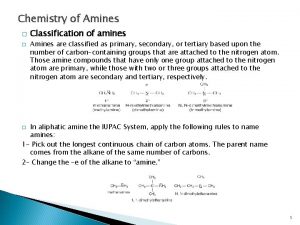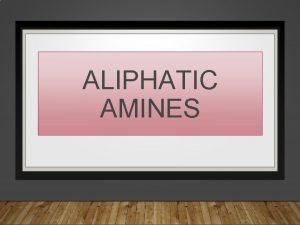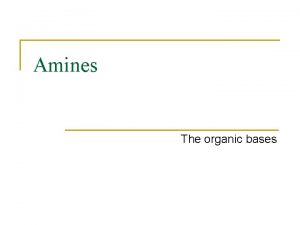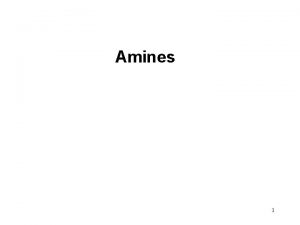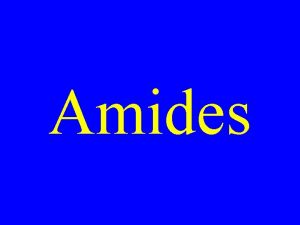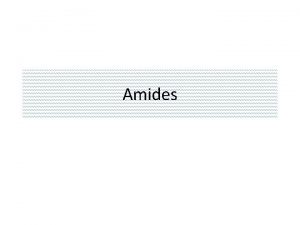1 7 AMINES AND AMIDES AMINES Amines are





















- Slides: 21

1. 7 AMINES AND AMIDES

AMINES Amines are derivatives of ammonia molecules that contain a nitrogen atom bonded to one or more alkyl groups on each molecule. Many amines have strong, unpleasant odours. ex. putrescine cadaverine

COMMON AMINES

NAMING PRIMARY AMINES Take the “e” off the end of the alkane name and add the suffix “amine. ” ex. CH 3 NH 2 is methanamine An aromatic compound with NH 2 attached to a benzene ring is aniline.

NAMING SECONDARY AND TERTIARY AMINES ●begin with an amine name based on the longest alkyl group ●use the locator, N, to indicate the attachment of additional chains to the N atom ex. N-ethyl-N-propylbutan-1 -amine

EXAMPLE 1: NAME EACH OF THE FOLLOWING AMINES. a) b)

naming cont’d c) d)

EXAMPLE 2: Draw each of the following amines with ethyl as the attached alkyl groups. Then name each structure. a) a primary amine

EXAMPLE 2 cont’d b) a secondary amine c) a tertiary amine

PROPERTIES OF AMINES ●small amines are soluble in water ●N-C and N-H bonds are polar ●causes more VDW forces and more energy needed to break bonds ●higher MP and BP than their corresponding hydrocarbon compounds ●primary amines have higher BP’s than secondary bc they can form 2 H bonds. ●secondary amines can form 1 H bond and tertiary cannot form any

AMIDES Amides are structurally similar to esters except the two chains are joined by a nitrogen atom next to a carbonyl group instead of an oxygen atom.

NAMING AMIDES three parts: ●the first part from the amine ●the second part from the acid ●the ending -amide

EXAMPLE 3: NAME EACH OF THE FOLLOWING AMIDES. a) b)

EXAMPLE 4: Draw the structure of Nethylpropanamide

PROPERTIES OF AMIDES ●small amides are soluble b/c the N-H groups form H bonds with water ●the longer the carbon chain, the less soluble the amide

PREPARATION OF AMINES 1. alkyl halide + ammonia ---> primary amine ex. iodoethane + ammonia ---> ethanamine

PREPARATION OF AMINES 2. alkyl halide + 1 amine ---> 2 amine ex. iodoethane + ethanamine ---> N-ethylethanamine

PREPARATION OF AMINES 3. alkyl halide + 2 amine ---> 3 amine ex. iodoethane + N-ethylethanamine ---> N, Ndiethylethanamine

SYNTHESIS OF AMIDES - involves a condensation reaction of a carboxylic acid and ammonia OR a primary or secondary amine.


HOMEWORK: p. 58 #1, 2 p. 60 #1, 2 p. 62 #1 - 5
 Insidan region jh
Insidan region jh Amines chemsheets
Amines chemsheets Basicity of amines
Basicity of amines Guanidine basicity
Guanidine basicity Ester nomenclature
Ester nomenclature Carboxylate ion
Carboxylate ion Amides reactions
Amides reactions Name amides
Name amides Amide hydrolysis
Amide hydrolysis Naming amides
Naming amides Vital amines vitamins
Vital amines vitamins Amino acid optical isomers
Amino acid optical isomers Amine group
Amine group Base forte
Base forte Amine vasoactive
Amine vasoactive Physical properties of amines
Physical properties of amines Chapter 20
Chapter 20 Amines hydrogen bonding
Amines hydrogen bonding Carboxylic acid and amine reaction
Carboxylic acid and amine reaction Dissociation des acides aminés
Dissociation des acides aminés Primary amine
Primary amine O ch
O ch

